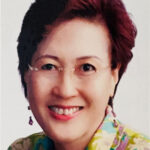
The Authors and Illustrator
Rosalind Sun Peng Lee, Psy.D.

An experienced psychotherapist, counsellor and advocate for foreign domestic servants in Singapore, Dr. Sun is founder of Life Solution Counselling and Training Services— working with young school children, delinquent youths, mandated gangster teens and their families. Dr. Sun conducts training workshops on parenting skills, team building and other psychological perspectives and practices to schools and corporations.
William Bergquist, Ph.D.

Educator, consultant and coach working in more than 20 countries and 1,000 organizations, Dr. Bergquist is author or co-author of more than 50 books and 200 articles on topics ranging from enhancing faculty performance to leading postmodern organizations and from conditions of 21st Century freedom to challenges of 21st Century irony. Dr. Bergquist co-owns digital libraries on professional coaching and professional psychology.
Dustin Markel, MFA
 Mr. Markel received his Masters from Tufts University Graduate School of Arts and Sciences in 2017. His work, influenced by his years spent in urban settings, addresses the social and political consequences of youth violence, and the ongoing dilemma of school shootings. He questions components of control, the media’s power and what it means to be a victim while reflecting on the school shooting at his middle school in 2003.
Mr. Markel received his Masters from Tufts University Graduate School of Arts and Sciences in 2017. His work, influenced by his years spent in urban settings, addresses the social and political consequences of youth violence, and the ongoing dilemma of school shootings. He questions components of control, the media’s power and what it means to be a victim while reflecting on the school shooting at his middle school in 2003.
________________________________
Content of Book
Two quite different approaches to the topic of women for whom their world is primarily wrapped around their labor. The first sections of the book are devoted to a description of the conditions under which these women are working and to the history of the organizations in which they work, as well as the culture in which they live. We hope to provide you, the reader, with a compelling narrative regarding the work life of these women. These narratives are quite intimate in the case of the Foreign Domestic Workers, and carefully documented in the case of the Mill Girls and Harvey Girls. We hope that each of these narratives provides an actual portrait of the daily life being led by these three populations of working women. Hopefully, the illustrations we offer similarly conveys something that rings true about the life they have led.

The last section of this book is quite different in tone and perspective. It concerns the reasons why these women are laboring under these demanding and difficult conditions. We believe that it is not enough to paint an accurate and compelling portrait of these women. It is also important to examine causes and potential remedies—especially given that these same difficult working conditions still exist in the world. While some of our readers might want to put this book down after the stories have been told, we hope that many readers will want to join us in seeking to understand how things got like they have been and what can be done with women of the 21st Century for whom their Word for World is Work.




